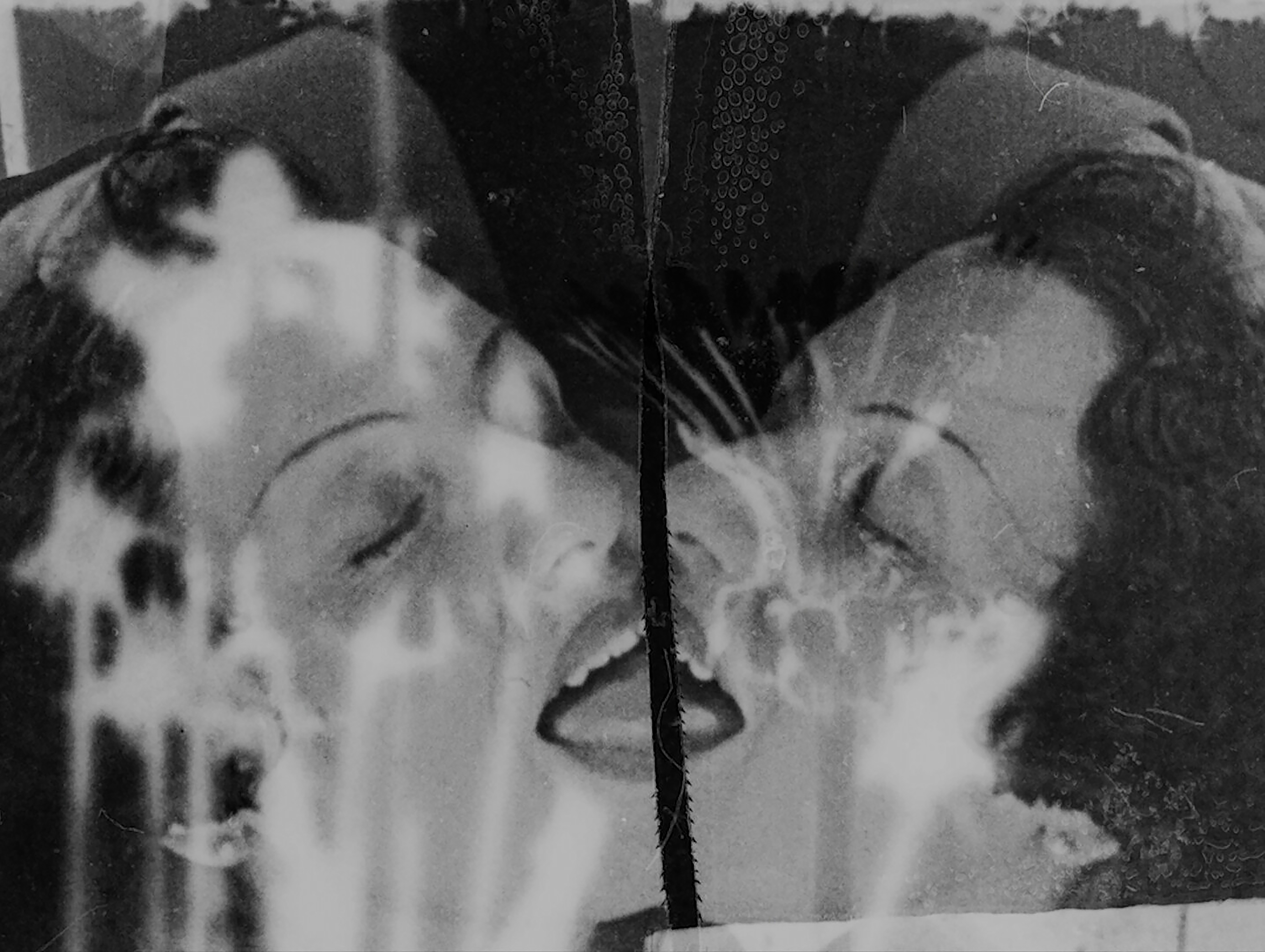
Negative/Positive Film (2023) by Federica Foglia
Sunday, September 1, 2024, 3:15 pm
CROSSROADS 2024 – program 8
move forward and breathe
Like silent storms, and with references to transnational political struggle and resistance, this program intermingles alchemical explorations of the corporeal experience of cinematic emulsion with spiritualized renderings of evanescent, weather-inflected and abstracted landscapes and reclaimed erotics of the sensuously visceral body.
SCREENING:
For Jina (2024) by TT Takemoto (US); digital video, color, sound, 3 minutes. Terre Rouge Terre Noire (2024) by Agnès Perrais (France); 16mm screened as digital video, color, sound, 7 minutes, exhibition file from Light Cone. The Land at Night (2024) by Dianna Barrie & Richard Tuohy (Australia); 16mm, color, sound, 14 minutes. Traces (2023) by Chantal Partamian (Canada/Lebanon); digital video, color, sound, 9 minutes. Traits (2020) by Adina Ionescu-Muscel (Belgium); digital video, black & white, silent, 3 minutes. ULÍA #1, #2 & #3 (2024) by Laura Moreno Bueno (Spain); digital video, color, silent, 10 minutes. Metamorphosed bodies of the star that generates us (2021) by Adina Ionescu-Muscel (Belgium); digital video, color, sound, 4 minutes. L’Arbre (2021) by Chantal Partamian (Canada/Lebanon); digital video, color, sound, sound, 3 minutes. Negative/Positive Film (2023) by Federica Foglia (Italy/Canada); digital video, black & white, sound, 14 minutes. TRT: 65 minutes
PROGRAM TICKETS: $12 General/$10 Cinematheque Members, Gray Area Members & students (with ID)
FESTIVAL PASSES: $110 General/$88 Cinematheque Members, Gray Area Members & students (with ID)
program community partner: Canyon Cinema
← 1 2 3 4 5 6 7 8 9 10 →
CROSSROADS 2024
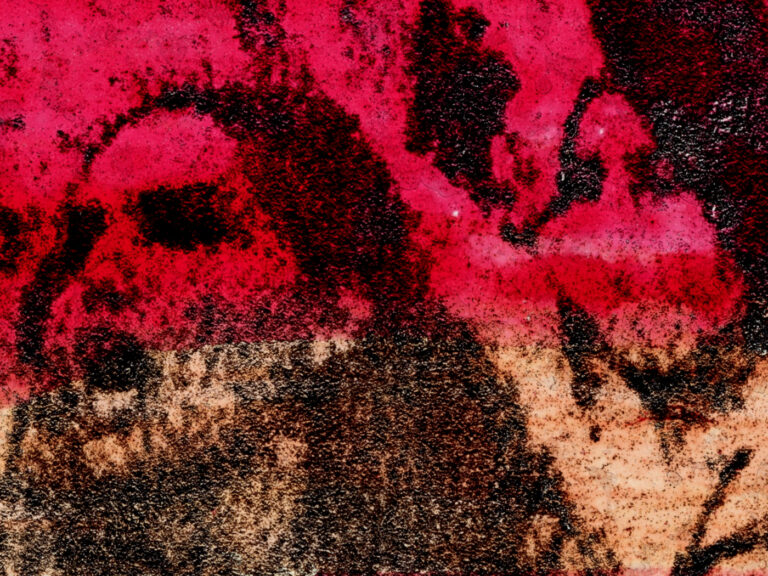
For Jina (2024) by TT Takemoto
Honoring the Woman, Life, Freedom movement and the legacy of Mahsa Amini, known as “Jina.” (TT Takemoto) world premiere
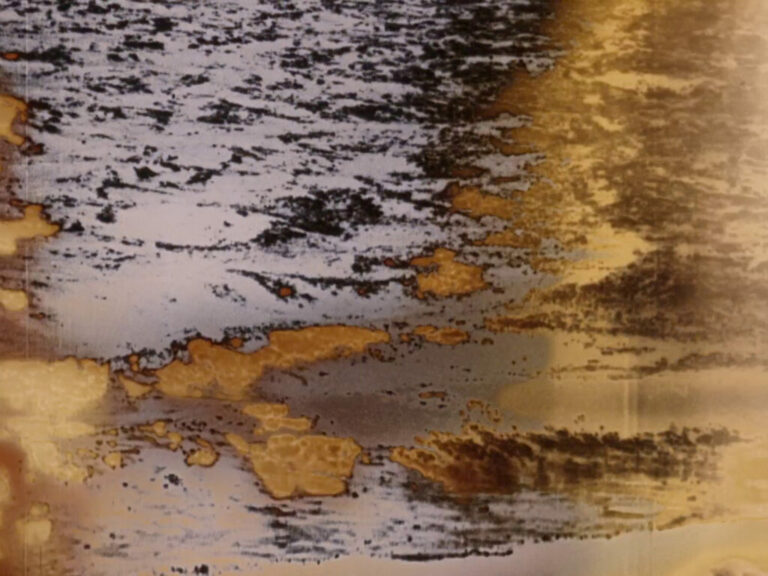
Terre Rouge Terre Noire (2024) by Agnès Perrais
Four motifs of an insular landscape: dunes, grass, stormy skies, sea. These motifs are inflected and intertwined through various photochemical operations: successive printing generations, flat printing, bipacking and chemical toning; unsettling the steady, desolate shots to create an imaginary landscape where elements and matter meet. (Agnès Perrais)
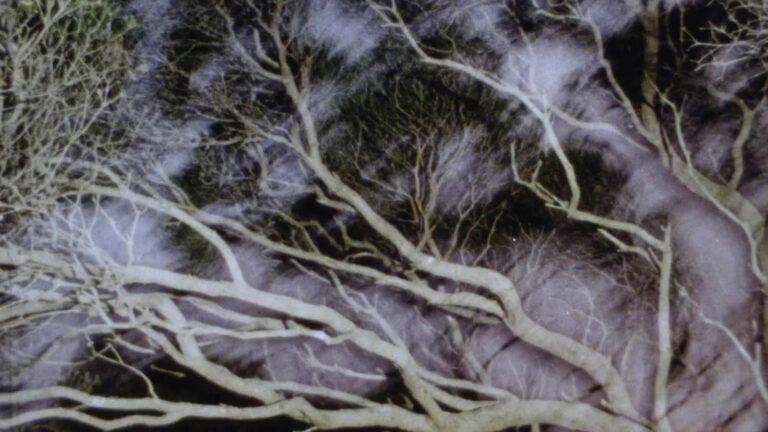
The Land at Night (2024) by Dianna Barrie & Richard Tuohy
An eerie trip across the landscape takes a dark turn into Australian Gothic. (Dianna Barrie & Richard Tuohy)
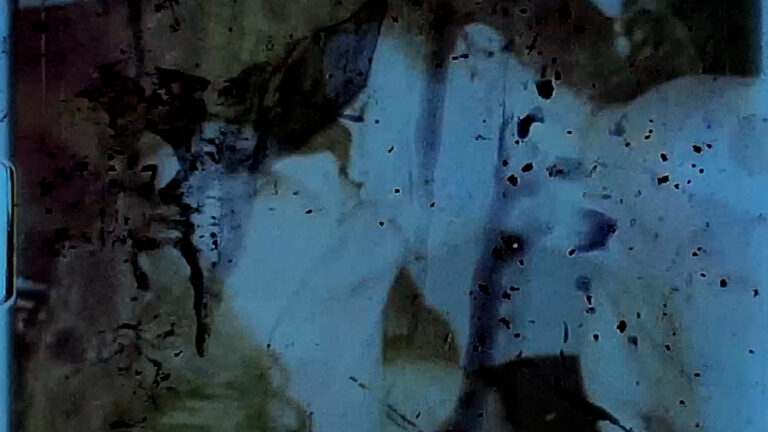
Traces (2023) by Chantal Partamian
Beirut 1980s.
Amid the rubble of a torn building, a reel of film.
An unlikely unraveling of queer bodies taking shape and form, while the war-torn city around and its spectacle of toxic masculinity glitches and disintegrates. (Chantal Partamian) bay area premiere
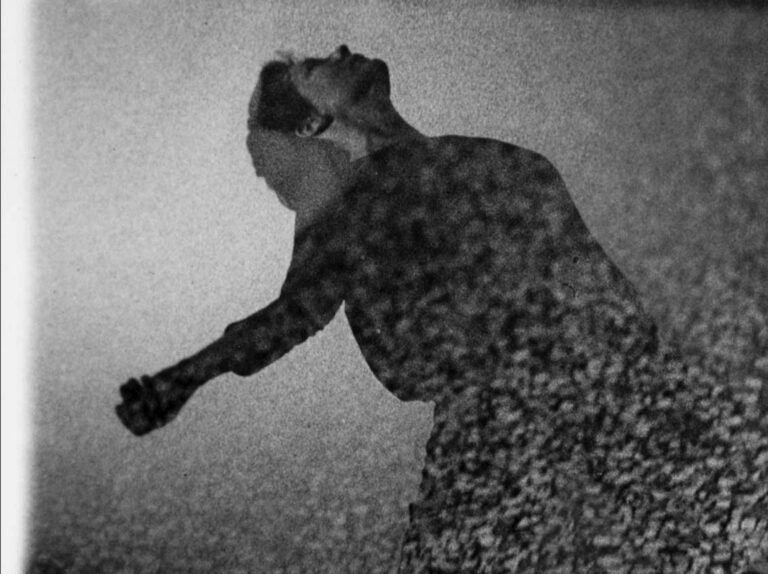
Traits (2020) by Adina Ionescu-Muscel
Traits is inspired by artist Cécile Franceus’ work. In her drawings, produced from thousands of lines and loops, hardly any of the surface remains uncovered; she plays with the resistance and vulnerability of the paper. Building up, tearing apart, sticking on, in order to renew again. (Adina Ionescu-Muscel) north american premiere
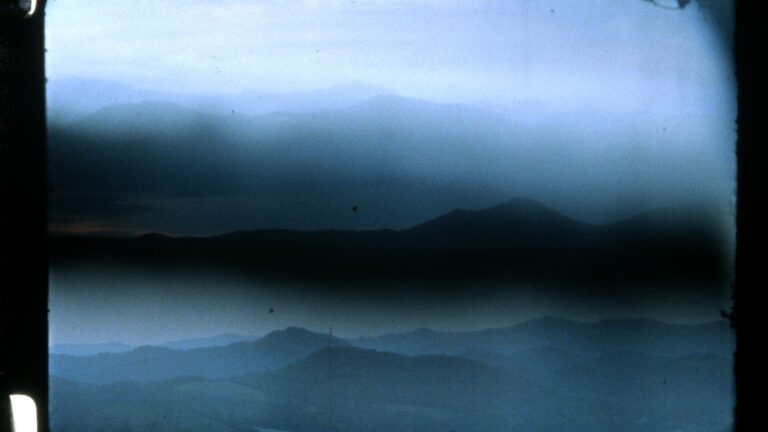
ULÍA #1, #2 & #3 (2024) by Laura Moreno Bueno
The limits of the landscape are always the same, because they do not understand political borders, but geographical features. A line that separates the sea from the sky, mountainous waves that cut across the sky. Regardless of where you are, these limits follow the same pattern. This film proposes as a starting point the use of these limits to create a sort of landscape collage, to reconstruct the image of the landscape by combining space and time from the capture of the image; from the present, and not from the subsequent construction in post-production, hence the key role of the analogue image. (Laura Moreno Bueno) north american premiere
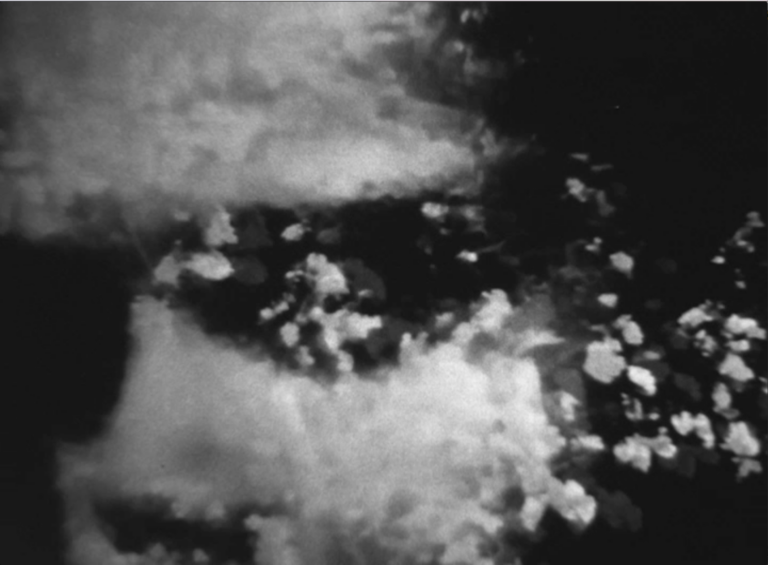
Metamorphosed bodies of the star that generates us (2021) by Adina Ionescu-Muscel
Looking at the foliage of trees, with its perpetually shimmering backlit leaves, the breeze stirred, like a mass of flickering signs, he felt the rustle amplify and decline as an unfamiliar language. A breach opens, the light passes through and the world unfolds. (Adina Ionescu-Muscel) bay area premiere

L'Arbre (2021) by Chantal Partamian
Super-8mm and 16mm footage and expired cartridges found and shot in Quebec reflect on words written in Beirut to create a melancholic postcard between both worlds. (Chantal Partamian) US premiere
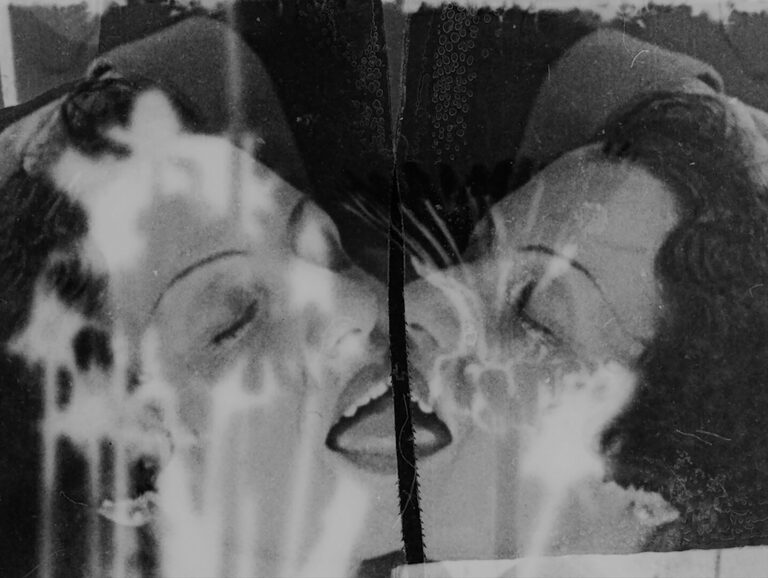
Negative/Positive Film (2023) by Federica Foglia
Camera-less film collage composed of layers of 16mm erotic films from the ’20s, ’40s and ’70s, interspersed with nature documentaries. This abstraction combines both the black and white positive film stock and its negative counterpart onto the same film base. The filmmaker uses emulsion lifting and other collage techniques to remediate women’s bodies, dislodged from their original erotic context and torn from their male co-protagonists. The female body slowly merges with those of insects and plants. (Federica Foglia) bay area premiere
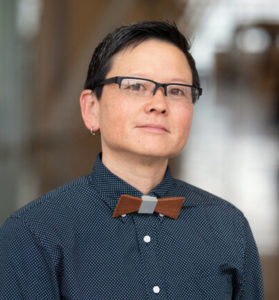 TT Takemoto (US) is a filmmaker exploring hidden dimensions of same sex intimacy and trauma in Asian and Asian American history. Takemoto conjures up queer historical fantasies by manipulating found footage and engaging with tactile dimensions of the archive.
TT Takemoto (US) is a filmmaker exploring hidden dimensions of same sex intimacy and trauma in Asian and Asian American history. Takemoto conjures up queer historical fantasies by manipulating found footage and engaging with tactile dimensions of the archive.
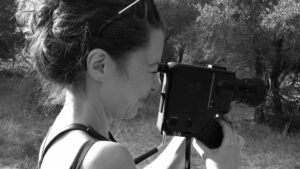 Born in Paris, Agnès Perrais (France) began making creative documentaries while pursuing a doctoral thesis on the links between lyricism and politics in cinema. She then encountered the practice of silver-based cinema thanks to the shared laboratories l’Etna and l’Abominable. Working both in documentary forms and experimental shorts, her work explores the articulations between politics and the imaginary. She is actively involved in several collectives (including L’Etna, La Poudrière, Le Navire Argo, Les Éditions du Dé rouge and others.) and is a founding member, with Anaïs Ibert, Frédérique Menant and Leïla Colin-Navaï, of the association La Surface de dernière diffusion.
Born in Paris, Agnès Perrais (France) began making creative documentaries while pursuing a doctoral thesis on the links between lyricism and politics in cinema. She then encountered the practice of silver-based cinema thanks to the shared laboratories l’Etna and l’Abominable. Working both in documentary forms and experimental shorts, her work explores the articulations between politics and the imaginary. She is actively involved in several collectives (including L’Etna, La Poudrière, Le Navire Argo, Les Éditions du Dé rouge and others.) and is a founding member, with Anaïs Ibert, Frédérique Menant and Leïla Colin-Navaï, of the association La Surface de dernière diffusion.
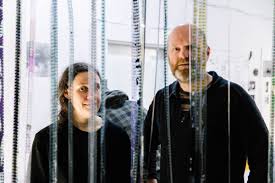 Dianna Barrie & Richard Tuohy (Australia) are the proprietors of small gauge film lab nanolab and are the founders of the artist-run film lab Artist Film Workshop in Melbourne. They are both long term and abiding exponents of the possibilities of DIY film. They have taught experimental film workshops all over the world, spreading the word about working with cine-film creatively and joyously with limited means and resources. They embody the film lab spirit and evangelize about it wherever they go. Their films are steadfastly (yet playfully!) materialistic, focussed on the essence of the apparatus of cinema.
Dianna Barrie & Richard Tuohy (Australia) are the proprietors of small gauge film lab nanolab and are the founders of the artist-run film lab Artist Film Workshop in Melbourne. They are both long term and abiding exponents of the possibilities of DIY film. They have taught experimental film workshops all over the world, spreading the word about working with cine-film creatively and joyously with limited means and resources. They embody the film lab spirit and evangelize about it wherever they go. Their films are steadfastly (yet playfully!) materialistic, focussed on the essence of the apparatus of cinema.
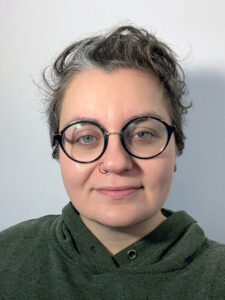 Chantal Partamian (Canada/Lebanon) is an experimental filmmaker and archivist. Her work uses mainly Super-8mm and found footage. Her archival activities are centered on the preservation and restoration of reels from the Eastern Mediterranean, associated with research focused on archival practices in conflict regions. Partamian’s films have been presented and awarded at numerous festivals. They are distributed by Vidéographe, Groupe intervention Vidéo and the Canadian Filmmakers Distribution Centre.
Chantal Partamian (Canada/Lebanon) is an experimental filmmaker and archivist. Her work uses mainly Super-8mm and found footage. Her archival activities are centered on the preservation and restoration of reels from the Eastern Mediterranean, associated with research focused on archival practices in conflict regions. Partamian’s films have been presented and awarded at numerous festivals. They are distributed by Vidéographe, Groupe intervention Vidéo and the Canadian Filmmakers Distribution Centre.
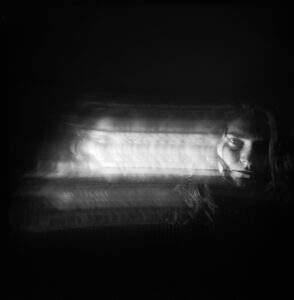 Adina Ionescu-Muscel (Belgium) is a Belgian-Romanian multimedia artist based in Brussels. Through work in still and moving images and installations, she questions the world around her, setting herself the task not of understanding it, but of multiplying the ways of being, that is to say, the ways of experiencing, feeling, making sense and giving importance to things.
Adina Ionescu-Muscel (Belgium) is a Belgian-Romanian multimedia artist based in Brussels. Through work in still and moving images and installations, she questions the world around her, setting herself the task not of understanding it, but of multiplying the ways of being, that is to say, the ways of experiencing, feeling, making sense and giving importance to things.
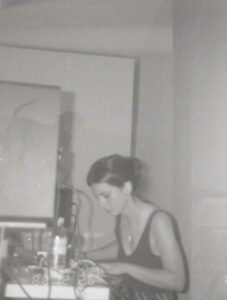 Laura Moreno Bueno (Spain) is interested in the transfiguration of audiovisual codes using digital or analogue media. She studied creation at the Elías Querejeta Zine Eskola, which allowed her to continue her research into the representation of the body as well as delving into analogue processes. Her films have screened at festivals such as Ann Arbor Film Festival, Images, Ficunam, [S8] Mostra de Cinema Periférico and Filmadrid, among others.
Laura Moreno Bueno (Spain) is interested in the transfiguration of audiovisual codes using digital or analogue media. She studied creation at the Elías Querejeta Zine Eskola, which allowed her to continue her research into the representation of the body as well as delving into analogue processes. Her films have screened at festivals such as Ann Arbor Film Festival, Images, Ficunam, [S8] Mostra de Cinema Periférico and Filmadrid, among others.
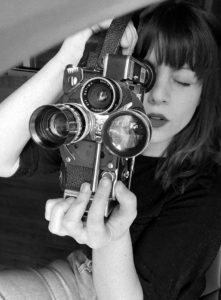 Federica Foglia (Italy/Canada) is a transnational visual artist and writer. She holds a BA in Multimedia Languages and Digital Humanities: History of Art, Theatre and Cinema from the University of Naples L’Orientale; an MFA in Film from York University, Toronto, and is currently a Ph.D. researcher in Cinema and Media Studies at York. Her practice revolves around tactile filmmaking, recycled cinema, amateur filmmaking, archives, ecofeminism and materialist cinema. Her work engages with the physical qualities of the film medium and the politics of fragmented aesthetics. She is currently working on a project that involves eco-friendly emulsion lifting techniques to remediate 16mm archival films and developing eco-sustainable photographic processes with algae-based materials.
Federica Foglia (Italy/Canada) is a transnational visual artist and writer. She holds a BA in Multimedia Languages and Digital Humanities: History of Art, Theatre and Cinema from the University of Naples L’Orientale; an MFA in Film from York University, Toronto, and is currently a Ph.D. researcher in Cinema and Media Studies at York. Her practice revolves around tactile filmmaking, recycled cinema, amateur filmmaking, archives, ecofeminism and materialist cinema. Her work engages with the physical qualities of the film medium and the politics of fragmented aesthetics. She is currently working on a project that involves eco-friendly emulsion lifting techniques to remediate 16mm archival films and developing eco-sustainable photographic processes with algae-based materials.
